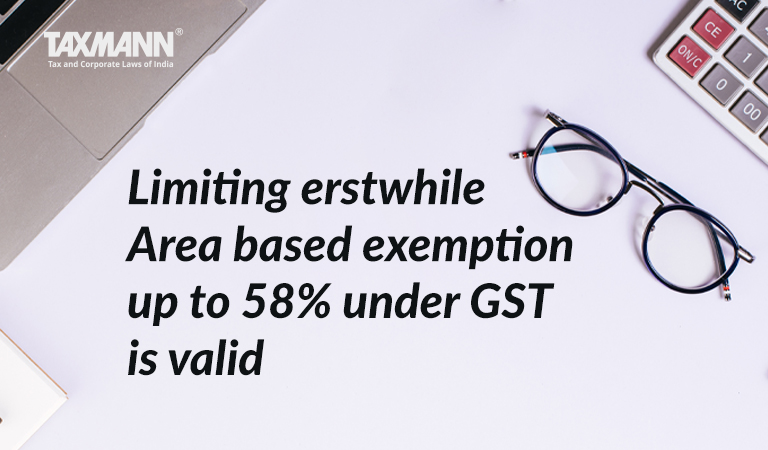Limiting erstwhile Area based exemption up to 58% under GST is valid
- News|Blog|GST & Customs|
- 2 Min Read
- By Taxmann
- |
- Last Updated on 19 October, 2022

Case Details: Hero Motocorp Ltd. v. Union of India - [2022] 143 taxmann.com 221 (SC)
Judiciary and Counsel Details
-
- B.R. Gavai & B. V. Nagarathna, JJ.
Facts of the Case
The Central Government had granted 100% Central Excise Duty exemption to units in Uttrakhand and Himachal Pradesh by issuing notification in 2003 in pre-GST era. However, after implementation of GST w.e.f. 1-7-2017 by invoking its powers under the proviso to section 174(2)(c), it rescinded exemption notification by issuing Notification No.21/2017-CE dated 18th July, 2017 in order to ensure seamless flow of ITC credit to buyers and substituted the 100% tax exemption/refunds with budgetary support for 58% of tax. The appellant filed appeal before the Supreme Court and contended that the Central Government was bound to give 100% tax exemption.
Supreme Court Held
The Honorable Supreme Court noted that when an exemption granted earlier is withdrawn by a subsequent notification based on a change in policy, even in such cases, the doctrine of promissory estoppel could not be invoked.
However, it can’t be said that the appellant’s claim based on promissory estoppel is without substance. In the deliberations of the GST Council, it was observed that the States also need to correspondingly reimburse the industrial units which were entitled to exemption under any existing incentive scheme out of the share of revenue received through devolution, which, as per the Finance Commission, stands at 42%.
Therefore, the Court permitted the appellant to make representations to the respective State Governments as well as to the GST Council and requested the State Governments and the GST Council to consider such representations.
Disclaimer: The content/information published on the website is only for general information of the user and shall not be construed as legal advice. While the Taxmann has exercised reasonable efforts to ensure the veracity of information/content published, Taxmann shall be under no liability in any manner whatsoever for incorrect information, if any.

Taxmann Publications has a dedicated in-house Research & Editorial Team. This team consists of a team of Chartered Accountants, Company Secretaries, and Lawyers. This team works under the guidance and supervision of editor-in-chief Mr Rakesh Bhargava.
The Research and Editorial Team is responsible for developing reliable and accurate content for the readers. The team follows the six-sigma approach to achieve the benchmark of zero error in its publications and research platforms. The team ensures that the following publication guidelines are thoroughly followed while developing the content:
- The statutory material is obtained only from the authorized and reliable sources
- All the latest developments in the judicial and legislative fields are covered
- Prepare the analytical write-ups on current, controversial, and important issues to help the readers to understand the concept and its implications
- Every content published by Taxmann is complete, accurate and lucid
- All evidence-based statements are supported with proper reference to Section, Circular No., Notification No. or citations
- The golden rules of grammar, style and consistency are thoroughly followed
- Font and size that’s easy to read and remain consistent across all imprint and digital publications are applied



 CA | CS | CMA
CA | CS | CMA
